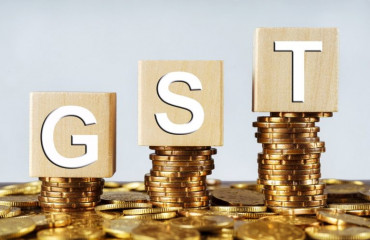
The Centre wants states to moderate stamp duty and offer women buyers a differential and lower rate. While presenting the Union Budget 2024-25 on 23 July, finance Minister Nirmala Sitharaman announced that stamp duty reforms would be made an essential component of urban development schemes.
The Centre wants states to moderate stamp duty and offer women buyers a differential and lower rate. While presenting the Union Budget 2024-25 on 23 July, finance Minister Nirmala Sitharaman announced that stamp duty reforms would be made an essential component of urban development schemes.
The central government is yet to release more information on how it intends to encourage states to reduce stamp duty and to what level.
This is not the first attempt by the Centre to coax states to lower stamp duty. When the United Progressive Alliance launched the Jawaharlal Nehru National Urban Renewal Mission (JNNURM) in December 2005, it wanted states to cut the stamp duty to 5%. Most states have lowered stamp duty since and many have brought it down to 5% for some or all property buyers. A few states still levy 7-8% or higher stamp duty.
Also Read: Shouldn't have put initial savings in real estate: Sandeep Tandon
The JNNURM was meant to encourage reforms and modernize 63 identified cities. The National Democratic Alliance replaced the mission with the Atal Mission for Rejuvenation and Urban Transformation (AMRUT) after coming into power in May 2014.
Mint explains the significance of stamp duty revenue for states.
Why are states reluctant to cut the stamp duty?
States are left with fewer avenues to raise tax revenues independently after the introduction of goods and services tax (GST) in July 2017. Many state-level levies were subsumed into state GST. While states get to keep the state GST on goods and services consumed within its borders, they are not free to tinker with the rates. State GST is the biggest source of tax revenues for states—more than 40% at the all-India level. For states, other major sources of tax revenues include value-added tax (VAT) on petroleum products and excise duty on alcohol. States have the freedom to reset the rates for both.
Stamp duty is another important source of tax revenue, particularly for bigger states. Like VAT and excise duty, the stamp duty varies from state to state. Kerala is one the states that levy a high stamp duty at 8%. The rate is 7.5% in Madhya Pradesh, 7% in urban Haryana, Uttar Pradesh and Tamil Nadu, and 4.9% in Gujarat.
Besides these taxes, states are entitled to a share in central taxes (personal income tax, corporation tax, central GST). However, that share is determined by the recommendations of the Finance Commission and many states are unhappy with the current devolution formula.
How big is stamp duty's contribution to states' own tax revenues?
A Reserve Bank of India (RBI) publication States Finances: A Study of Budgets estimated the share of stamp duty and registration fee in the combined own tax revenues of all states and Union territories at 11.7% for 2023-24. Property registration involves two levies: Stamp duty and registration fee. Most states charge 1% of the value of the transaction as a registration fee.
Also Read: Sold house in last 2 years? You may get indexation benefit and lower tax rate
For Haryana, as much as 16.6% of own tax revenues came from stamp duty and registration fees; for Maharashtra, it was 15.1%, and for Karnataka and Telangana, more than 14%. The share of stamp duty and registration fee in the own tax revenues of Uttar Pradesh was estimated at 13.2%. All these states have seen a construction boom.
What does the Centre want from states?
The budget 2024 has suggested that states with high stamp duties moderate the rate. It has not suggested any desirable rate as yet. It may want all states to lower the rate to 5% and then to 3% in a phased manner. The budget stated that stamp duty reforms would be made an essential component of urban development schemes. This could mean that certain components of central assistance under urban development schemes such as AMRUT may be linked to states lowering stamp duty.
The budget has also suggested lower rates for properties registered in women's names. Many states/UTs, such as Delhi, Haryana, Uttar Pradesh, and Maharashtra, currently allow such rebates. Delhi introduced a lower rate for registering property in a woman's name in 2003, becoming among the early states to offer a 2 percentage point concession. It was done to empower women and make them financially and economically independent. Indeed, the number of properties registered in women's names has sharply risen.
How does lower stamp duty help?
Lower taxes are necessary to clean up the property market. High rates prevent the registration of properties at their actual transaction value, which in bigger cities can be much higher than the notified circle rates. For instance, a property bought for ₹1 crore may be registered at ₹50 lakh to lower the tax outgo and the total cost of acquisition. High capital gains tax also acts as a deterrent to the registration of properties at the actual value of the transaction.
Also Read: Real estate stocks are roaring. But there is a dark side.
Lower stamp duties encourage people to register property transactions. When Uddhav Thackeray-led Maharashtra government offered a stamp duty rebate during the pandemic to energize the real estate market, it led to a sharp rise in transactions and registration. A surge in property registrations increases revenues for state governments and normally offsets some of the losses from reducing rates. Given that India is set to see an increased pace of urbanisation, property transactions will rise.
